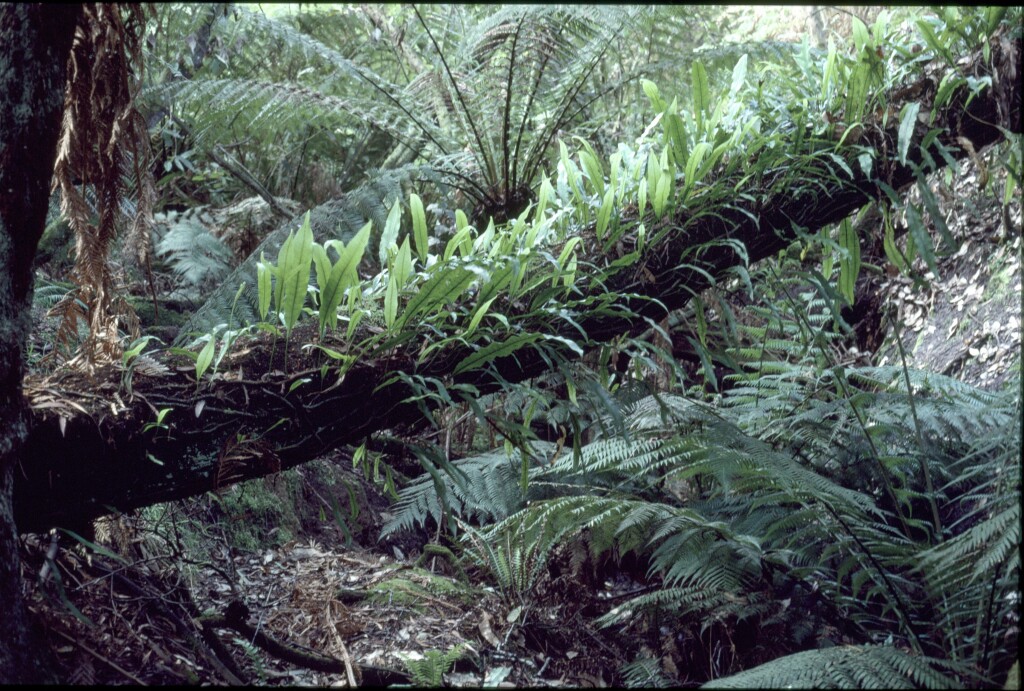Microsorum pustulatum subsp. pustulatum
Rhizome often climbing, grey-green, fleshy, 3–7 mm diam., scaly when young; scales brown, appressed, shiny, acuminate, deciduous. Fronds widely separated, erect or drooping, variable in size and shape, 5–50 cm long, firm in texture; stipe glabrous with scales clustered at swollen base. Lamina narrowing abruptly at base, shiny, light green with clear, thickened margins, simple and oblong to linear-lanceolate, or irregularly pinnately lobed with long terminal segment and 1–9 pairs of lateral lobes, each 5–15 cm long; scales scattered on undersurface of central vein, small, broad and inflated. Veins prominent, branching repeatedly to form network, main lateral veins dark, forming areoles enclosing free vein endings; enclosed veins usually bifurcate (often unbranched near margins of lamina), sometimes more than once bifurcate (particularly near midvein); submarginal vein continuous and wavy. Sori globose, 2–5 mm diam., slightly sunken (showing as raised circle on upper surface), in 2 rows, each about halfway between midvein and margin, without indusium.
VVP, GipP, OtP, WaP, CVU, GGr, EGL, EGU, WPro, HSF, HNF, OtR, Strz, MonT, HFE, VAlp. Also Qld, NSW, ACT, Tas. Common epiphyte in Victoria's wet forests, but also in caves, rock crevices or on mossy boulders and occasionally on forest floor.
In exposed sites the fronds are smaller, leathery and often simple. The venation in the lamina (see description above) is sometimes used as a diagnostic character for this species, being more complex than that found in Microsorum scandens.
 Spinning
Spinning


